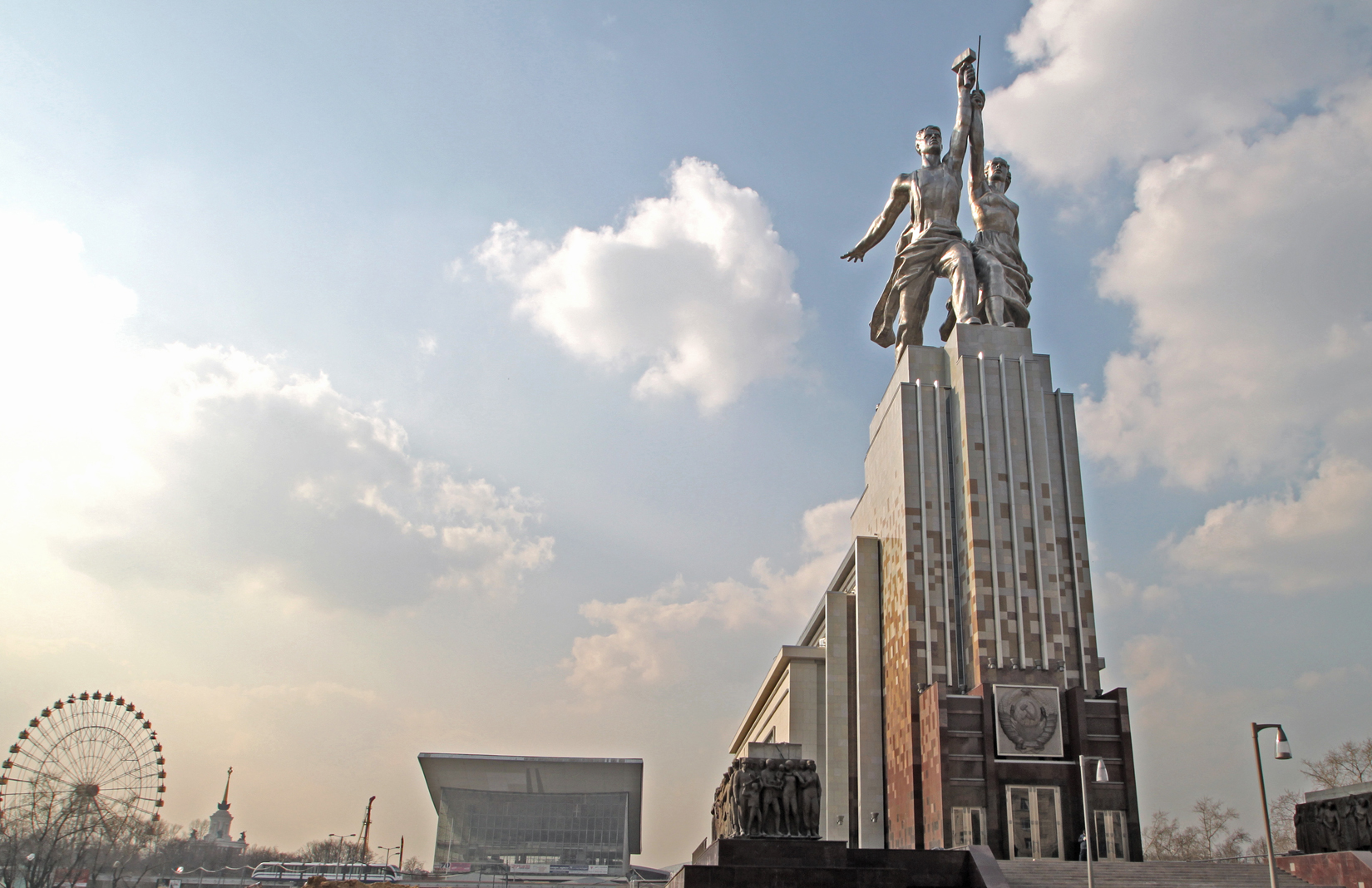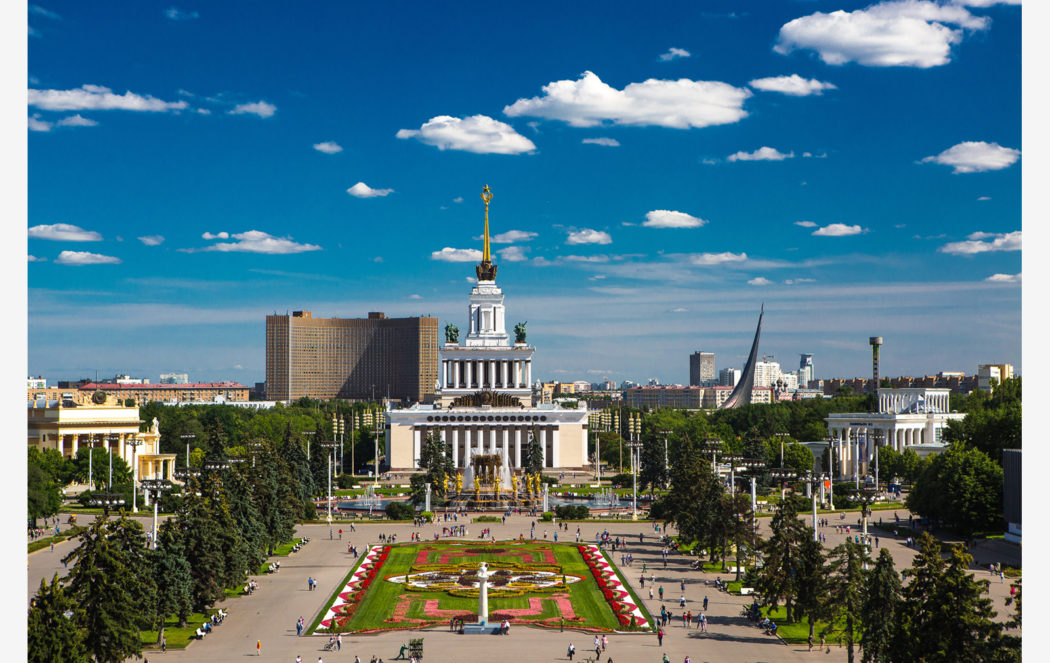
Across the former Soviet Union there are countless examples of monolithic structures rising high from the ground to shelter, collect or govern the citizens living in their shadows.
These strange, sloping forms, concrete parabolic rises and angular designs signify an age of futuristic optimism manifest in the built environment. But what is the relationship between monuments or buildings designed by one regime and passed onto a public for whom that no longer applies? What is their legacy? How are these spaces recontextualised in contemporary society?
The theme of the Venice Architectural Biennale this year was ‘Reporting from the Front’. Curator Alejandro Aravena invited participants to respond and reflect on the role of the architect in the struggle to improve living conditions for all. Titled VDNH Urban Phenomenon, the Russian pavilion showcases the ‘global significance’ of the 2,379,000 sq m VDNKh park in Moscow.
